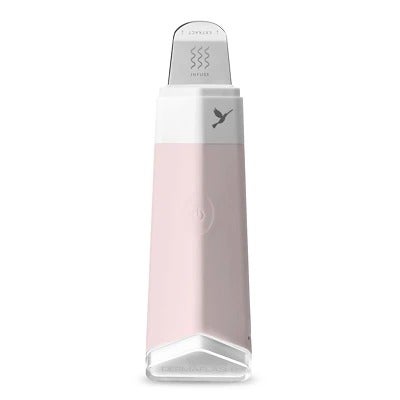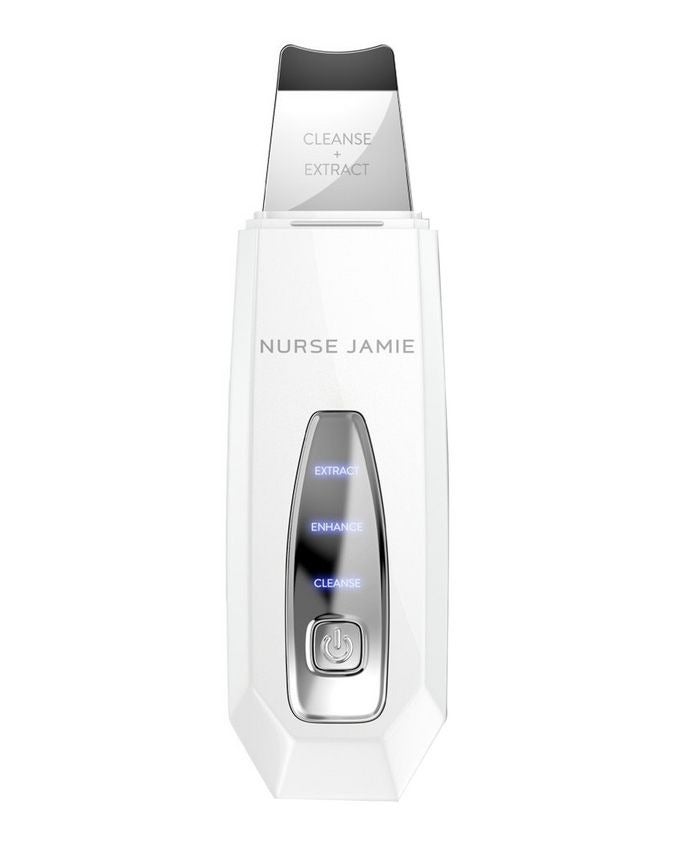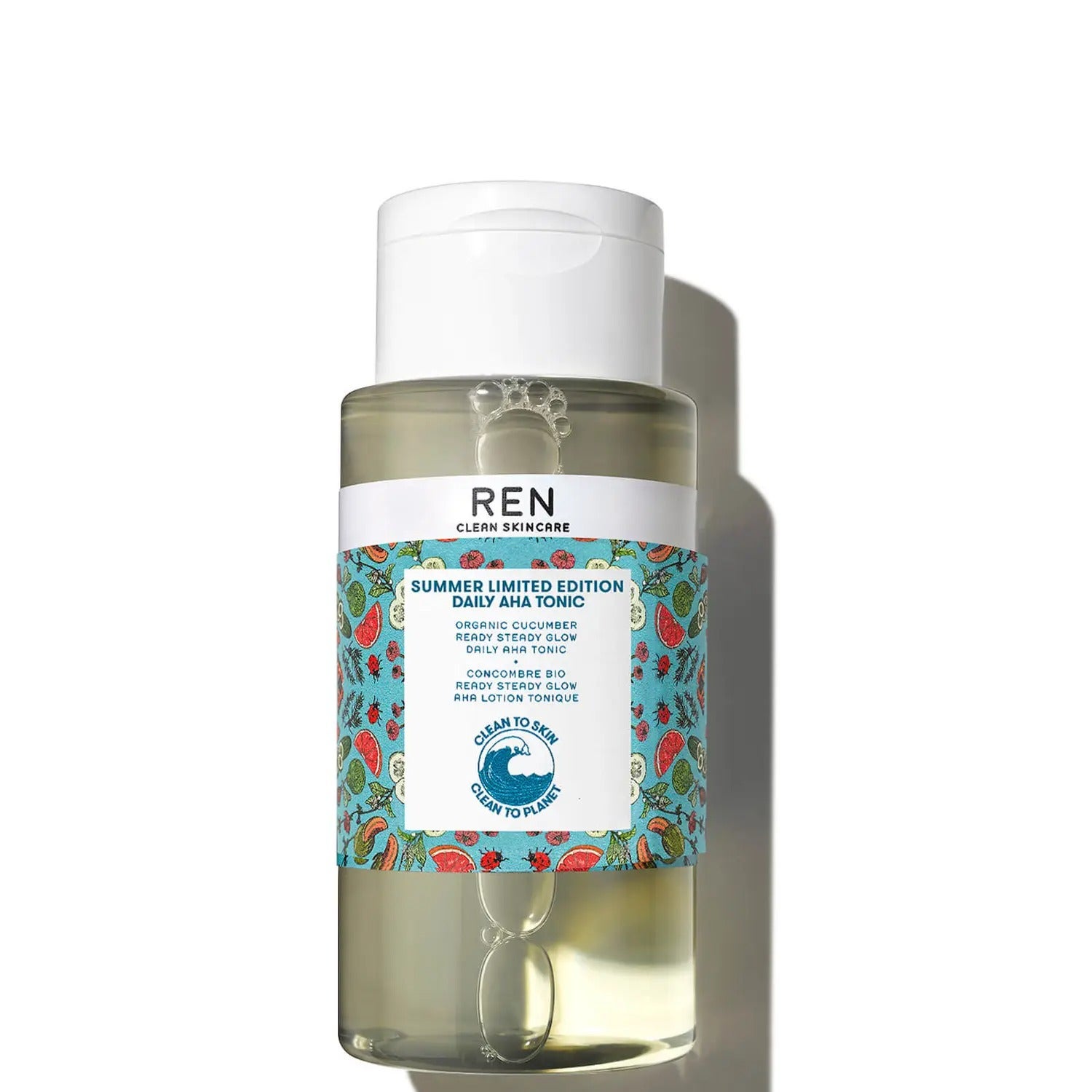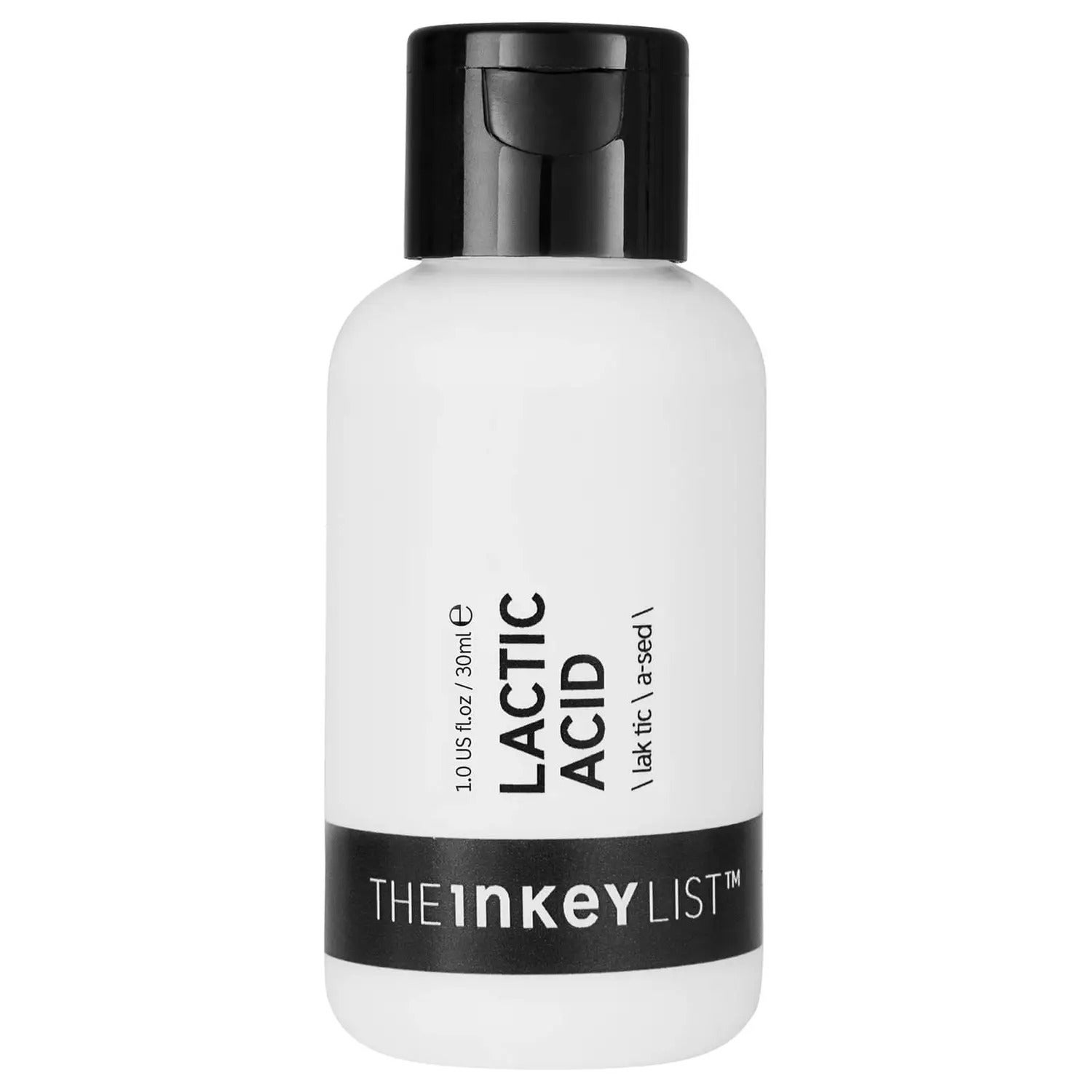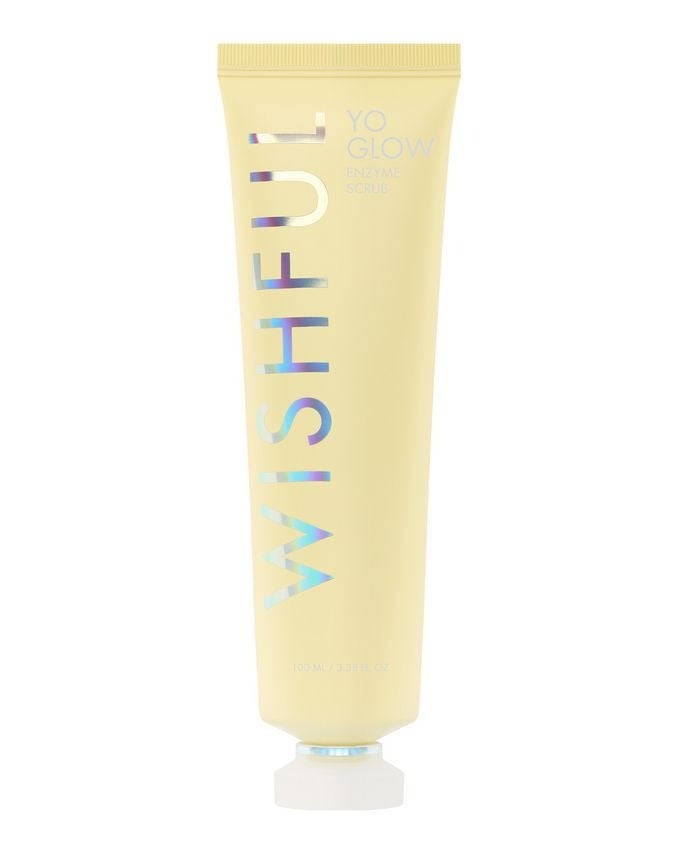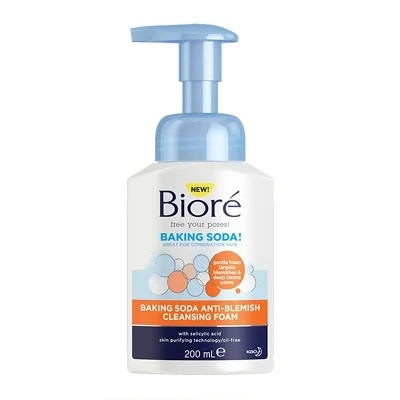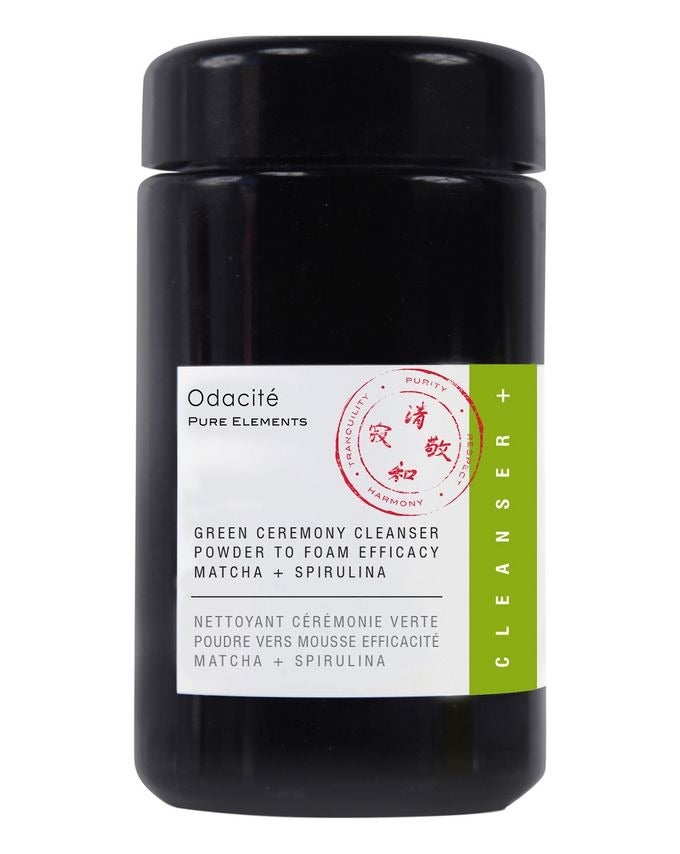The At-Home Beauty Hack That Made My Dull Skin Glow
Photo Courtesy of Jessica Harris.
Let's be honest – 'dermascraping' is a brutal-sounding word. Scraping dirt, debris and dead skin from your face seems slightly barbaric but that's exactly what the new cleansing method sweeping the beauty industry entails. If you've ever wished for a device that can suck all of the gunk out of your pores without having to visit a professional facialist (I know I have), then dermascraping is as close as you can get, and it's fast becoming the new DIY facial trend to try at home.
What is dermascraping and what are the benefits for skin?
AdvertisementADVERTISEMENT
Not to be confused with dermaplaning (shaving the face to get rid of fine hairs and dead skin cells), dermascraping makes use of a small, scraper-esque tool which promises to push out all the nasties that clog pores and lead to blemishes, uneven skin tone and inflammation. Using a spatula head and ultrasonic vibrations, the tool is a deep cleanser and an exfoliator with the added bonus of helping skincare to absorb better.
Though TikTok and Instagram are just catching on, dermascraping isn't actually new. "Dermascraping has been in the industry for many years and can be used before skin treatments to cleanse, gently exfoliate the skin and help product penetration," explains skincare expert Lisa Harris. "It's carried out by applying a water solution to the skin, while a metal spatula glides over. This is activated with ultrasonic, low frequency vibrations (around 20,000-30,000 vibrations per second) to break up and lift dead skin cells, unclog the pores and remove excess sebum," or oil, which skin produces.
How does dermascraping work?
As someone who suffers from congested skin (an issue only exacerbated by wearing a face mask) not to mention the odd hormonal breakout, a tool that could reset my skin and clear my pores of all the crap that topical treatments can't reach sounded too good to be true. So I decided to put it to the test.
Though dermascraping is still a little under the radar, there are a few tools out there. I tried Dermaflash's Dermapore first. At £99, it's pricy, but perhaps cheaper in the long run in comparison to professional facials. Coming out the other side of a monthly breakout, using a metal spatula to scrape over the remains of cystic blemishes felt dangerous. I was quite literally slicing the heads off spots and I was worried about the long-term repercussions, not to mention scarring. It might be a good idea to avoid active spots. After that, I slowly covered every inch of my face, using firm pressure and taking way too much pleasure from seeing the debris left on the device. It was working!
AdvertisementADVERTISEMENT
After a few hours, my chin began to tingle and by the evening I had a full-blown reaction on my hands. A cluster of angry spots had appeared and new friends came to join them every hour for the rest of the day. In a panic, I spoke to the brand and was assured that a level of 'purging' is expected as I had brought all the gunk to the surface of my skin. After a few days, new spots stopped appearing and my complexion calmed down. Since then, I haven't had the same reaction when using the tool. Although I didn't find the infuse function (for helping skincare absorb better) overly effective, I was very impressed by how much it pushed out of my pores and the softening effect it had on my skin after every use.
Before Dermascraping
After Dermascraping
Using Nurse Jamie's Dermascrape Ultrasonic Skin Scrubbing & Skincare Enhancing Tool, £70, was a slightly different experience. The streamlined design looks very slick in my bathroom and it has the added bonus of a cleanse function to help your cleansing product penetrate deep into the skin as well as unclog pores, exfoliate and infuse serums and moisturisers. While it didn't unearth as much debris as Dermaflash's tool, it had a slightly gentler disposition with a less severe spatula, leaving my skin squeaky clean, fresh and glowy. It looked like I'd had a professional exfoliation treatment. I didn't use the infusion setting very much (fingers work just fine to apply products such as serum and moisturiser) but the cleanse and unclog functions got plenty of use. I found myself looking forward to my twice-weekly deep clean.
AdvertisementADVERTISEMENT
Is dermascraping worth it for clear skin?
While I think there's a place for dermascraping in my skincare regime, I'm wary of using it on fresh or existing spots. Although my skin texture improved and my blemishes were significantly reduced, I'm unsure of how much of that is down to the devices as opposed to my skincare or hormone fluctuations. For the days where my complexion feels dull or lacklustre, I think it would be a great way to exfoliate and reset my skin, but I'm cautious of my fragile skin barrier – a concern shared by skin expert Renée Lapino.
"[Dermascraping] has been touted as a gentle but effective way to exfoliate but in my opinion it’s only effective on skin that has very little 'junk' to push out," she explains. "You need to rely on the vibrations to work their magic. Pushing or scraping with the device itself can damage the skin barrier, leading to inflammation and more breakouts." That being said, Renée does use dermascraping in her clinic but is quick to point out that it's only used on certain types of skin, for the aforementioned reason. She also says that dehydrated skin (which is common in the UK) may be too dry for this manual method of exfoliation.
Photo Courtesy of Jessica Harris.
How do you get glowing skin?
For this reason, you might want to explore other avenues, such as gentle exfoliating acids like lactic acid (an AHA or alpha hydroxy acid). This particular ingredient is a lot more hydrating than other types and is best used as part of a nighttime routine. As exfoliating acids make skin sensitive to sunlight, be sure to apply a high factor, broad spectrum sunscreen during the daytime.
AdvertisementADVERTISEMENT
I love a skincare device as much as the next person but as Lisa points out, there may be more effective ways to uncover glowing skin. She rates products containing papaya enzymes, which "provide a deep yet gentle daily exfoliation, dissolving unwanted dead skin cells and debris to reveal fresher, clearer, more radiant skin." Lisa adds: "Enzymes actually oxygenate the skin, speeding up the healing process of any breakouts." R29 rates Wishful Yo Glow Enzyme Scrub, £34, or Elemis Papaya Enzyme Peel, £35.
Lastly, another trick Renée swears by for de-gunking skin is adding a teaspoon of bicarbonate of soda to your cleanser. Bioré's Baking Soda Foam Cleanser, £5.99, contains the ingredient, as does Odacité Green Ceremony Cleanser, £52, if you don't fancy raiding your pantry.
Refinery29's selection is purely editorial and independently chosen – we only feature items we love! As part of our business model we do work with affiliates; if you directly purchase something from a link on this article, we may earn a small amount of commission. Transparency is important to us at Refinery29, if you have any questions please reach out to us.
AdvertisementADVERTISEMENT







